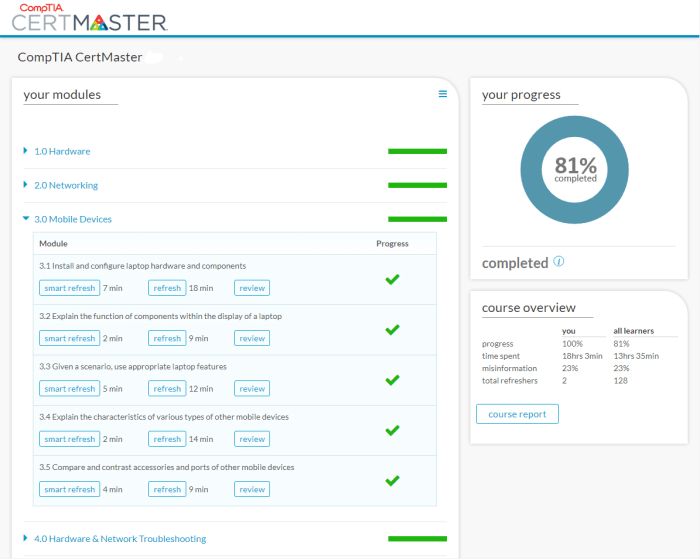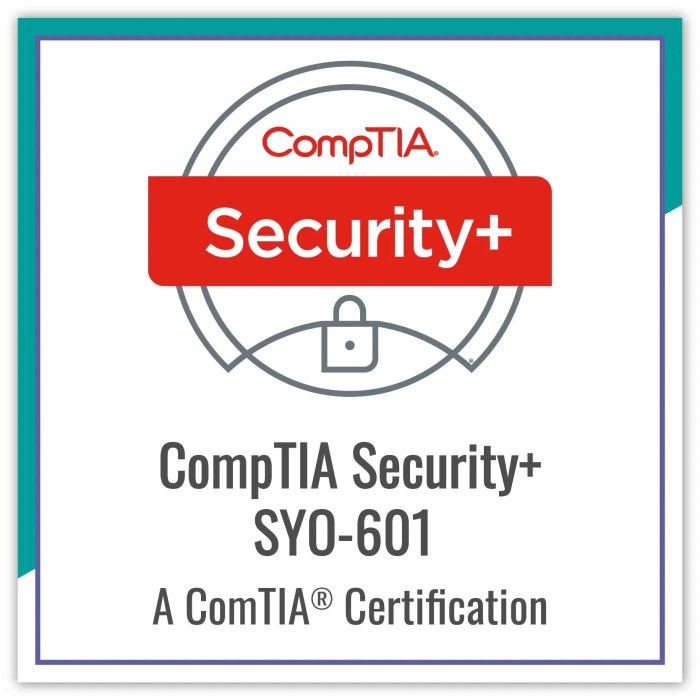Comptia certmaster ce security+ domain 1 answers – Delving into the realm of CompTIA CertMaster CE Security+ Domain 1, this comprehensive guide unravels the intricacies of information security, empowering you with a profound understanding of its fundamental concepts, threats, and risk management strategies.
Through an exploration of industry standards, compliance frameworks, and real-world case studies, this guide equips you with the knowledge and insights necessary to navigate the ever-evolving landscape of cybersecurity.
Overview of CompTIA CertMaster CE Security+ Domain 1

CompTIA CertMaster CE Security+ Domain 1 introduces the fundamental concepts and principles of information security, providing a comprehensive foundation for understanding and implementing effective security measures.
This domain covers topics essential for establishing and maintaining a secure computing environment, including security concepts, threats, vulnerabilities, risk management, compliance, and regulatory requirements.
Security Concepts and Principles
Information security is the practice of protecting information from unauthorized access, use, disclosure, disruption, modification, or destruction. The CIA triad (confidentiality, integrity, and availability) serves as a cornerstone of information security, guiding the development and implementation of security controls.
- Confidentiality ensures that information is accessible only to authorized individuals.
- Integrity protects the accuracy and completeness of information.
- Availability guarantees that information is accessible to authorized users when needed.
Security controls are mechanisms or procedures that help protect information and systems. Common types of security controls include access controls, encryption, firewalls, intrusion detection systems, and security policies.
Threats, Vulnerabilities, and Attacks, Comptia certmaster ce security+ domain 1 answers
Threats are potential events or actions that can compromise information security. Vulnerabilities are weaknesses or flaws in systems or networks that can be exploited by threats. Attacks are deliberate attempts to exploit vulnerabilities and compromise information security.
- Common threats include malware, phishing, social engineering, and denial-of-service attacks.
- Vulnerabilities can exist in software, hardware, or network configurations.
- Attacks can range from simple password attacks to sophisticated zero-day exploits.
Risk Management
Risk management is the process of identifying, assessing, and mitigating risks to information security. It involves understanding the potential threats, vulnerabilities, and consequences, and implementing appropriate controls to reduce the likelihood and impact of security incidents.
- Risk assessment involves identifying and analyzing potential threats and vulnerabilities.
- Risk mitigation involves implementing controls to reduce the likelihood or impact of risks.
- Risk management is an ongoing process that requires continuous monitoring and adjustment.
Compliance and Regulatory Requirements
Compliance with industry standards and regulations is crucial for organizations to maintain a secure computing environment. Common compliance frameworks include ISO 27001, NIST Cybersecurity Framework, and HIPAA.
- Compliance helps organizations demonstrate that they have implemented appropriate security measures.
- Regulatory requirements mandate specific security measures to protect sensitive information.
- Maintaining compliance can be challenging but is essential for protecting information and avoiding penalties.
Case Studies and Examples
Real-world case studies and examples provide valuable insights into the application of security concepts and principles.
- Case studies illustrate how organizations have successfully implemented security measures to protect their information.
- Examples highlight common security breaches and incidents, and the lessons learned from them.
- Best practices for preventing and responding to security threats are shared through case studies and examples.
Query Resolution: Comptia Certmaster Ce Security+ Domain 1 Answers
What is the purpose of CompTIA CertMaster CE Security+ Domain 1?
CompTIA CertMaster CE Security+ Domain 1 provides a comprehensive overview of the fundamental concepts of information security, including threats, vulnerabilities, risk management, and compliance.
What are the key topics covered in CompTIA CertMaster CE Security+ Domain 1?
Domain 1 covers topics such as security concepts and principles, threats and vulnerabilities, risk management, and compliance and regulatory requirements.
How can I prepare for the CompTIA CertMaster CE Security+ Domain 1 exam?
To prepare for the exam, it is recommended to study the official CompTIA CertMaster CE Security+ Domain 1 materials, attend training courses, and practice using online resources.

